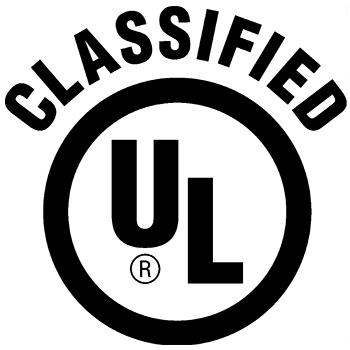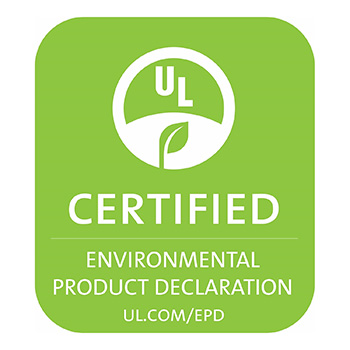Galvanized vs Stainless Steel: What’s The Difference?

Using the wrong kind of steel in a project can cost your clients up to $100,000 in damages, not to mention the potential health and safety hazards that can result from a negligent choice. That said, it’s easy to understand why using the right type of steel is essential. Knowing when to use galvanized steel vs stainless steel can affect your company’s reputation and the quality of your construction projects for decades to come.
For example, you don’t want your business to develop a reputation as one that uses galvanized steel in water pipes. Though this used to be common practice in home construction during the 1980s, it was never a good idea. As a result of this practice, many homes across the U.S are likely to have lead content in their drinking water.
Following this guide will help you not only avoid causing irreparable damage to your clients but will also protect your business from earning the reputation of a lackluster building company. Instead, if you know what you’re doing and you make the right choices when it comes to the type of steel you use, you’ll leave your clients feeling satisfied and secure. Doing so can lead to your clients viewing your company as one of authority and trustworthiness in your industry.
Galvanized Steel vs Stainless: What You Need to Know
Galvanized steel is a product type that has a thin layer of zinc on top of regular steel to help keep out oxygen and moisture. This measure helps protect the steel product from rusting and degradation. Typically, the galvanized type of steel performs decently against occasional interactions with water. This means that it should remain resistant and structurally sound even after a splash of water here and there, or light, rarely-occurring rain showers.
However, it’s worth noting that galvanized steel is not as resistant to salt water, so it’s not recommended to use it when the project exists near an ocean or other areas where salt water is common.
Steel is usually galvanized after it has already been welded and applied to a surface since cutting through the zinc coating on top of galvanized steel can cause explosions and make people sick. Furthermore, it’s a good idea to use respiratory protection when welding this material, as the zinc layer can give off fumes when it becomes sufficiently heated.
Stainless steel, however, is a steel type that has chromium and carbon mixed into it while it is being forged. Stainless steel is usually more reliable than galvanized steel for construction purposes.
Which Types of Steel Are Appropriate and When?
Different types of metals have varying levels of usefulness depending on what project they’re needed for. As such, both stainless steel and galvanized steel are appropriate for certain applications. Galvanized steel is appropriate for use in specific car components, railings, and certain types of structural beams. However, as mentioned above, galvanized steel is only somewhat water resistant, and it’s not appropriate for use in any project that will be in constant contact with water.
On the plus side, galvanized steel retains most of its anti-rust capabilities when scratched, so it can handle a little wear and tear reasonably well. However, sufficient wear on the zinc layer will lead to faster rusting overall.
One difference between galvanized steel and stainless steel is that stainless steel usually only rusts when exposed to chlorinated water. This is why stainless steel is used for fasteners, beams, separators, and flow lines.
Difference Between Galvanized Steel and Stainless Steel Prices
Galvanized steel is much easier to produce than stainless steel. To galvanize a piece of steel, the product only needs to be dipped into molten zinc before it’s ready to use. Because of this, it’s cheaper than its counterpart, which makes it a more affordable choice for use in small-scale projects.
Stainless steel, however, has to be made via a complicated process that requires melting the components in very expensive specialized equipment. Because of this highly-involved process, stainless steel is more expensive than galvanized steel. As a result of each process, a single 0.032″ 12×12 length stainless steel usually costs upwards of $100, while 20 feet of galvanized steel can cost as little as $15.
Depending on the project you have in mind, you may also need to reshape the steel. Stainless steel is harder to reshape than galvanized steel, so it’s worth considering the difficulty you might face when trying to reshape the metal you need for your project. Additionally, you will have to factor in the transportation cost, the weight, and the quantity of steel product you choose before you ship it out.
When to Avoid Stainless Steel
Although stainless steel has a wide variety of uses, there are times when you want to avoid it completely.
If you suspect that there will be any friction between two components both made out of stainless steel, avoid letting the components in question come into contact with one another. Over time, friction between two pieces of stainless steel can cause the parts to weld themselves together, which could ruin any device or project they’re used to create.
Galvanized steel, on the other hand, is more ductile and less resistant to shaping (especially when heat isn’t part of the equation and builders can avoid the risks associated with exploding zinc and zinc fume exposure). Since it’s also cheaper, it functions well in small-scale projects. Galvanized steel is still sturdy enough to use in larger projects as well, especially in ones where you know it won’t be exposed to water or anything else that could cause the zinc layer to come off.
Also, if you did need to cut galvanized steel without heat that could expose you to fumes and explosives, you could galvanize the exposed metal yourself at a relatively low cost.
Galvanized Steel is Great for Small Projects
Galvanized steel is great for use outdoors in balconies, staircases, ladders, beds, and car parts. Although cars are exposed to water on occasion, galvanized steel will still hold up against damp weather, including acid rain. This is because the zinc layer doesn’t strip away immediately when exposed to the elements. When water damages galvanized steel, it’s usually the result of constant exposure instead of the occasional brush with water.
Even when small pieces of the zinc coating are scratched or stripped away, the remaining zinc coating is still quite effective at protecting the underlying steel. This is because the zinc surrounding the steel still absorbs oxygen and corrosive elements from the air instead of letting them get onto the surface of the steel itself.
Depending on the process used to galvanize steel, it can also be painted afterward. The paint can be purely decorative or you can use special paint to help protect the steel even more. Paint is partially what keeps the steel on cars safe from rusting after being exposed to the elements. That said, if the metal in question is going to be used in a small-scale indoor project, or something simple around the house, then galvanized steel is a much better choice compared to the more expensive stainless steel option.
Industrial Uses for Stainless Steel
In a contest between galvanized steel vs stainless steel, stainless undeniably comes out on top in certain industrial use cases. There are hundreds of companies dedicated to supplying stainless steel tubing, bars, plates, and sheets. This is especially true of aerospace or other aeronautical companies, since the fasteners, wings, and other parts of an aircraft need to be as strong as possible. High-grade stainless steel is a must-have in those industries since it’s necessary to avoid taking any sort of risk when it comes to something as complex yet delicate as airplanes and the like.
Passenger safety is also a top priority in these situations, so using galvanized steel as a source metal would not be appropriate for those types of machinery. Stainless steel is also easy to weld, and it’s recyclable. Because of this feature, if a piece of machinery becomes outdated or broken, you can strip it down and recycle the stainless steel components. It’s a definite plus for more environmentally-conscious companies.
There’s a Metal for Every Purpose
Now that you know the basic difference between galvanized steel and stainless steel, you can make an informed decision about which steel type suits your needs best. Once you’ve decided on the kind of steel you’re going to use, you can determine how much of it you need, and how the product needs to be treated before you receive it.
At Intsel Steel Distributors and Bushwick Metals, we offer a wide variety of galvanized steel and stainless steel processing options. Whichever type of metal you choose, you can begin your project on the right foot, right away. So check out our value-added services and learn about how we can help you get any construction project off the ground. Also, when in doubt, you can trust our industry experts to recommend the right approach for any construction endeavor.






